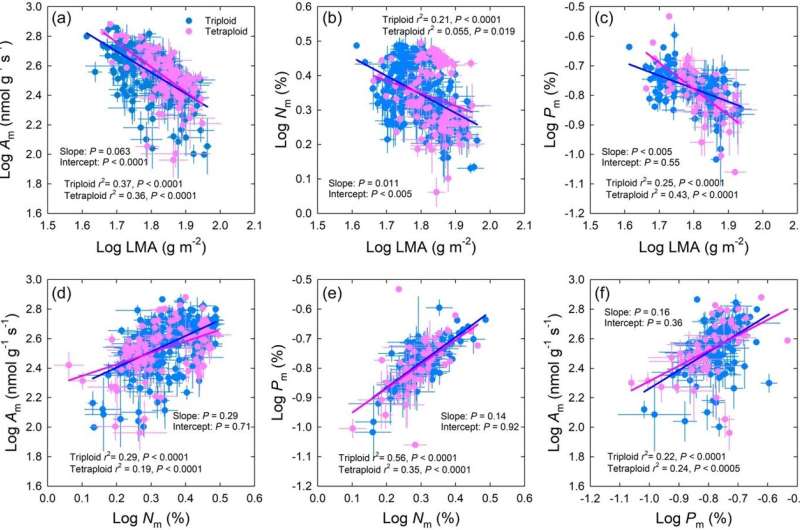Study sheds light on leave traits, productivity of C₄ bioenergy crops

A study led by researchers at the Center for Advanced Bioenergy and Bioproducts Innovation (CABBI) improves understanding of leaf functional relationships and provides valuable new information for scientists modeling the productivity of C4 bioenergy crops.
The research team found that miscanthus and sorghum—both C4 plant species—occupy a distinct niche of the leaf economics spectrum (LES), with greater photosynthetic rates and nitrogen use efficiency than more common C3 plants.
The study, published in Plant, Cell & Environment, was led by Postdoctoral Researcher Shuai Li of CABBI with Lisa Ainsworth, a Plant Physiologist with the U.S. Department of Agriculture's Agricultural Research Service (USDA-ARS) Global Change and Photosynthesis Research Unit and Adjunct Professor of Plant Biology and the Carl R. Woese Institute of Genomic Biology (IGB) at the University of Illinois Urbana-Champaign.
LES describes relationships among leaf traits reflecting fundamental trade-offs underpinning key ecological strategies for resource acquisition and use in plants. It is largely based on information from C3 species in natural environments and has been studied rarely in C4 crops, which use a different carbon-fixation process: C4 plants convert sunlight energy into 4-carbon molecules, whereas the first photosynthesis product of C3 plants is a 3-carbon molecule. C4 plants make up about 3% of land plant species but include major sources of food and biofuels worldwide, such as maize, sorghum, and miscanthus.
The CABBI researchers showed that C4 bioenergy crops occupy a distinct range of the LES, with higher photosynthetic rates and greater nitrogen use efficiency. Additionally, Miscanthus × giganteus genotypes with different ploidy levels (or number of chromosome pairs) exhibit leaf trait divergence and distinct leaf functional relationships compared to C3 plants.
By expanding the trait relationships described in the LES to include C4 crops in agricultural conditions, the study enhances understanding of overall worldwide patterns in leaf functional relationships and offers insight into the potential for ploidy to improve resource use efficiency, Ainsworth said.
"This study took advantage of diverse plantings of miscanthus in Illinois and Mississippi to test how leaf properties vary in different lines and in different environments," Ainsworth said. "We studied the investment that different miscanthus lines make in leaf structure and nutrient content—information that is crucial for modeling productivity of bioenergy crops and where they can be grown."
More information: Shuai Li et al, The leaf economics spectrum of triploid and tetraploid C 4 grass Miscanthus x giganteus, Plant, Cell & Environment (2022). DOI: 10.1111/pce.14433
Provided by University of Illinois at Urbana-Champaign



















